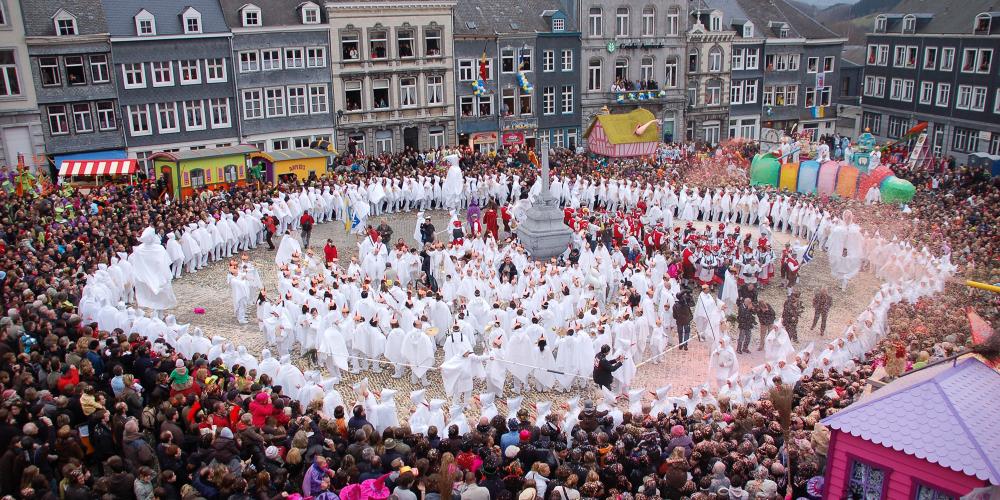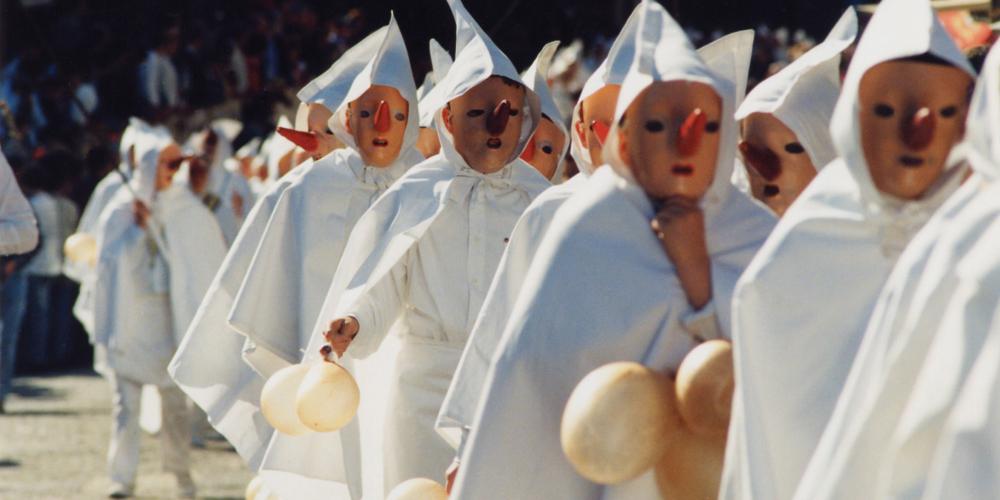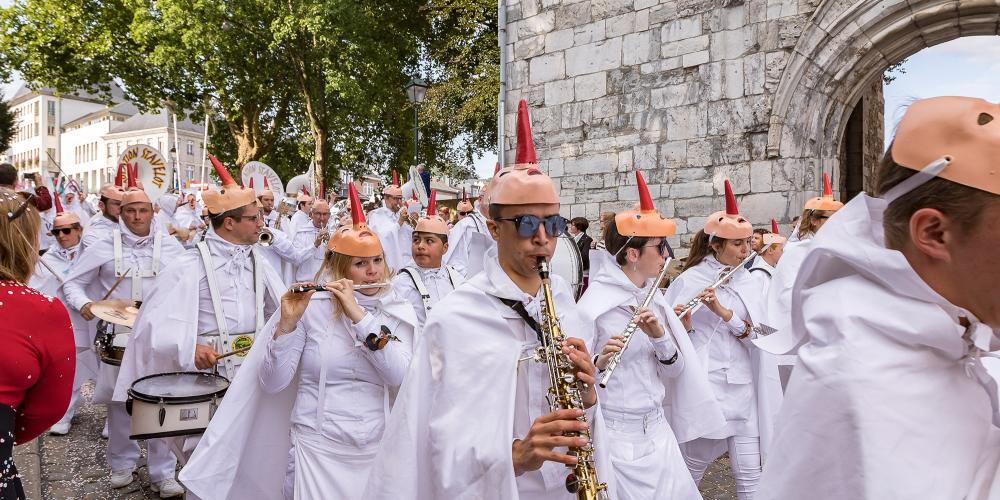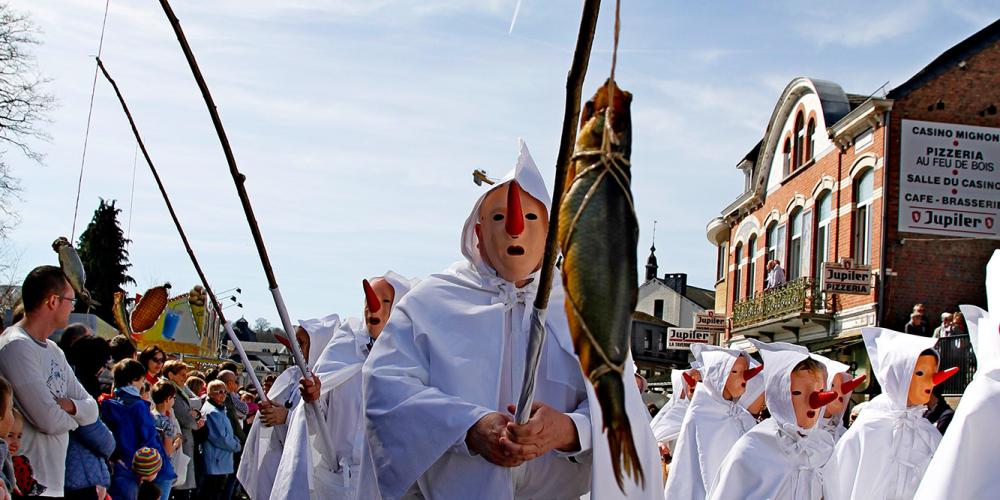Laetare de Stavelot

Festivities begin Saturday evening with a superb procession of 1200 participants in sparkling costumes and chariots covered in lights, creating a luminous and fun evening where humour is king.
Sunday afternoon features a large carnival procession with 2500 participants parading through the heart of the city. A dozen local groups take part in a great competition of original costumes, carnival floats and animation. Several music bands fuel this energetic procession.
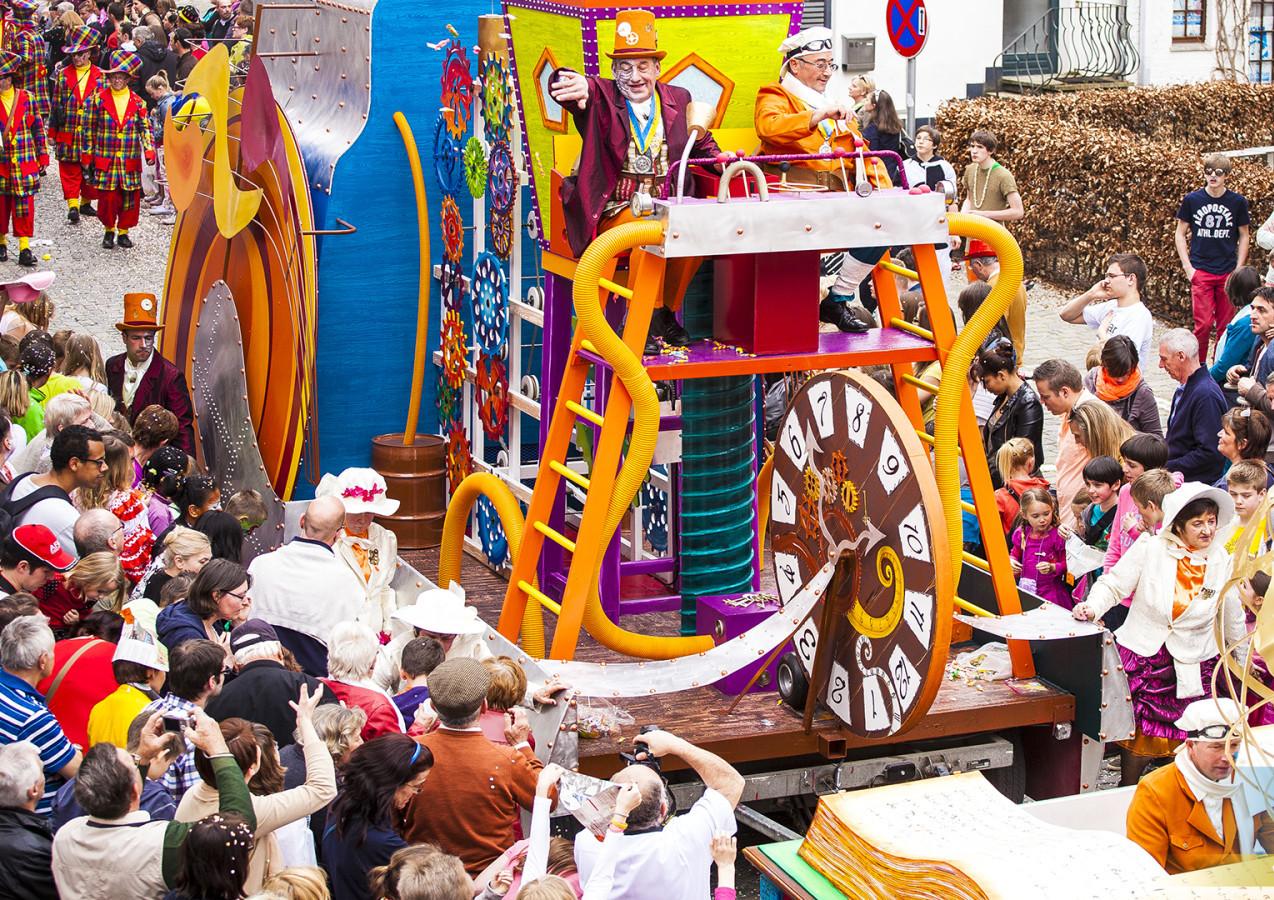
The last—most anticipated group—includes more than 400 White-Moussis! These party kings come from all sides to tease the crowd with their confetti, swine bladders, fish, chimney sweeps... followed by humorous posters, giants and two tanks blowing tons of confetti!
The origin of the White-Moussis figure is said to be an edict of the Abbot Prince of Manderscheidt who, in 1499, forbade the monks of Stavelot Abbey from participating in the pagan carnival celebrations... The Stavelotains derided this prohibition by participating in the festivities dressed as white monks. Thus, the Blanc Moussi, "dressed in white", parades each year with its traditional white suit and its hilarious mask with a long red nose.
At the end of this colourful procession, on the Place St-Remacle, the Blanc Moussis begin their roundeau dance in the main square. Don't hesitate to join us in this joyful round!
In the evening, there is a magnificent fireworks display. Various balls prolong the party, including the famous "White Moussis White Night" in the abbey's centuries-old cellars.
Monday is reserved for the individual groups and bands of Stavelot. A joyful disorder gathers everyone at the Laetare Closing Ball.
